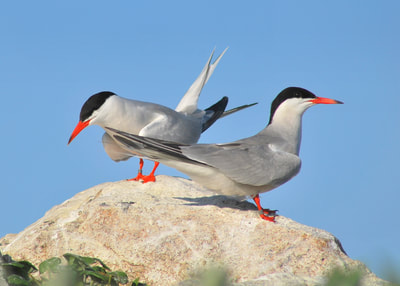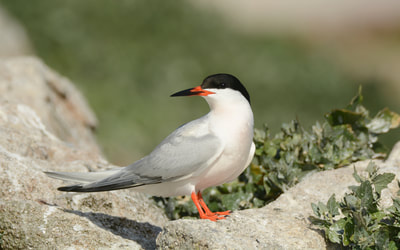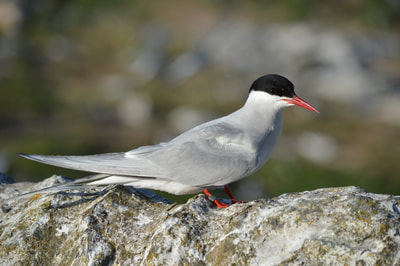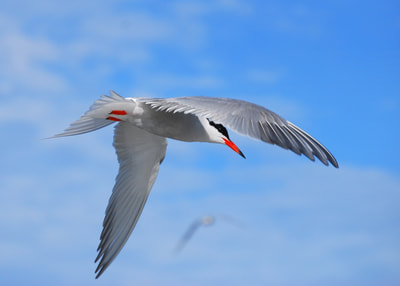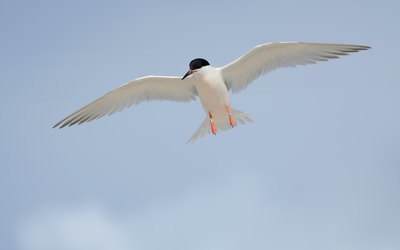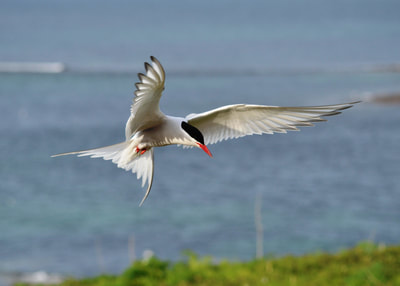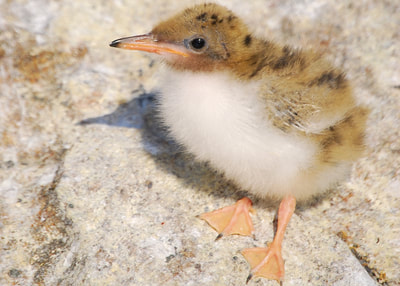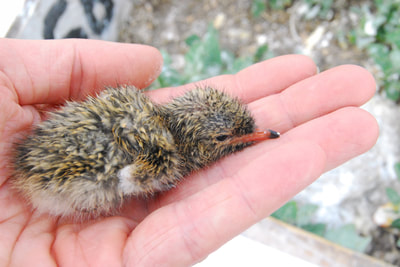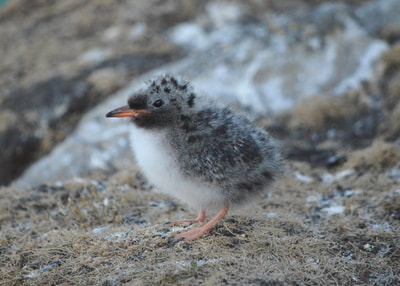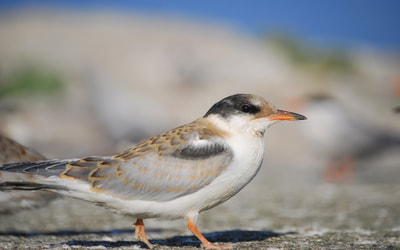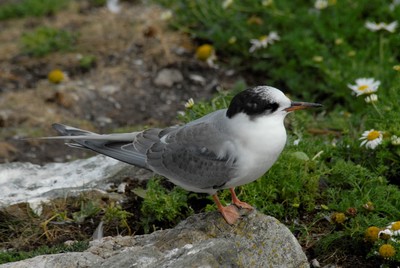Introducing the Roseate Tern (Sterna dougallii)
It can be difficult to distinguish the difference between tern species, particularly if you only get a brief glimpse.
Below is a short guide on how to identify a roseate tern adult, chick and fledgling.
Below is a short guide on how to identify a roseate tern adult, chick and fledgling.
- Adult roseate terns have a very pale grey mantle and white underparts which give it a paler appearance when compared to the greyer common and Arctic terns.
- Note, the subtle rosy hue on it's breast, which is how it received it's namesake. This can be more visible at the start of the breeding season.
- They have bright red legs and very long flexible tail streamers (lacking any grey).
- Upon arrival to the UK and Ireland in May, the bills of roseate terns are completely black however throughout the season, the base gets progressively redder until by August, it is half red.
- They have a distinctive call; a quick, disyllabic 'chivvick'
- Length: 33-36cm (including tail-streamers)
- When in flight, compared with common or Arctic terns, the roseate tern has shorter wings and faster, shallower wingbeats
- With only 2-4 outer primaries darker than the rest, it creates a thin dark leading edge
- The rest of the primaries (inner) leave a small dark wingtip, whereas all of the primary tips are dark on common and Arctic terns
- Wingspan: 67-76cm
Newly hatched roseate tern chicks have a 'spiky' appearance because the down sticks together in tufts. The legs are dull pinkish-purple at hatching but quickly change to black.
These features are similar to that of Sandwich tern chicks.
These features are similar to that of Sandwich tern chicks.
- Juvenile roseate terns also have a similar appearance as juvenile Sandwich terns, due to the bold scaly pattern 'chevrons' on the upperparts and completed blackish cap.
- They have an all-black bill and blackish legs unlike common and Arctic terns
Please note all photographs were taken under Schedule 1 license
References:
Cabot, D and Nisbet, I (2013). Terns. The New Naturalist Library. HarperCollins Publishers. London
Svensson, L., et al (1999). Bird Guide. HarperCollins Publishers, London


